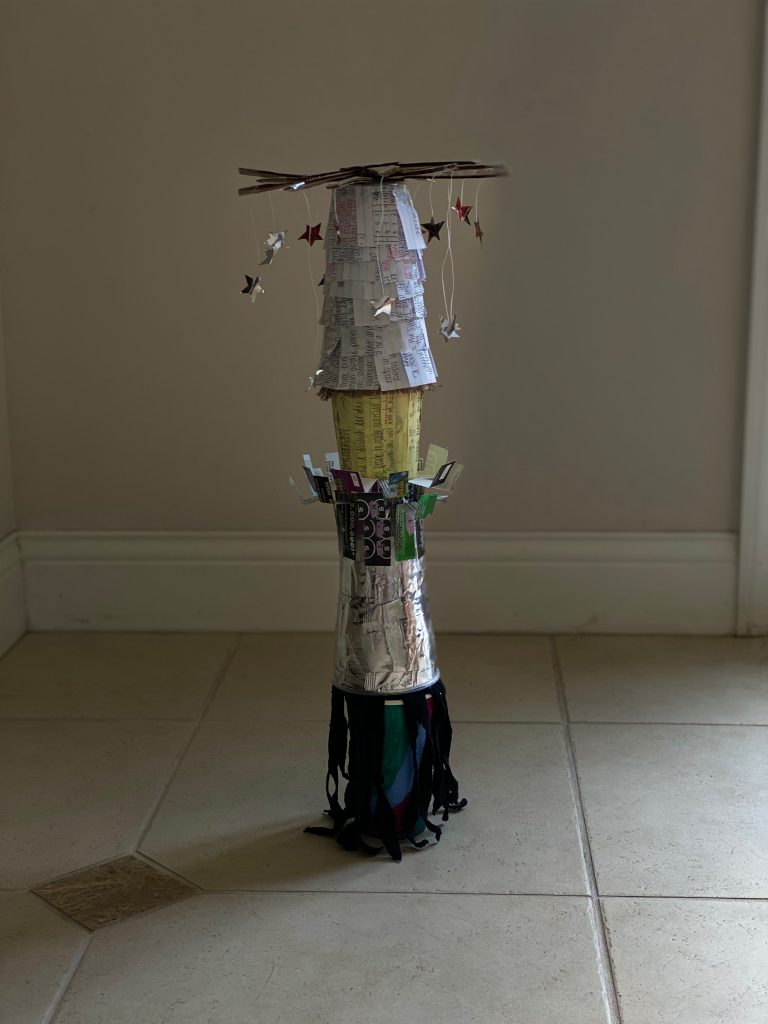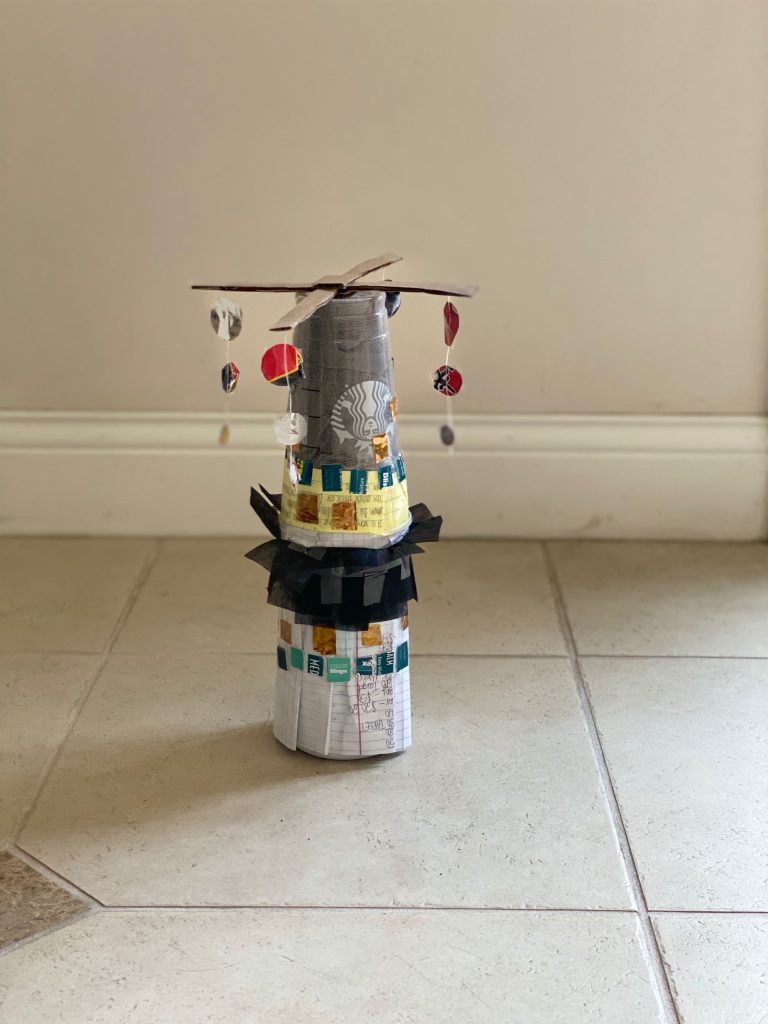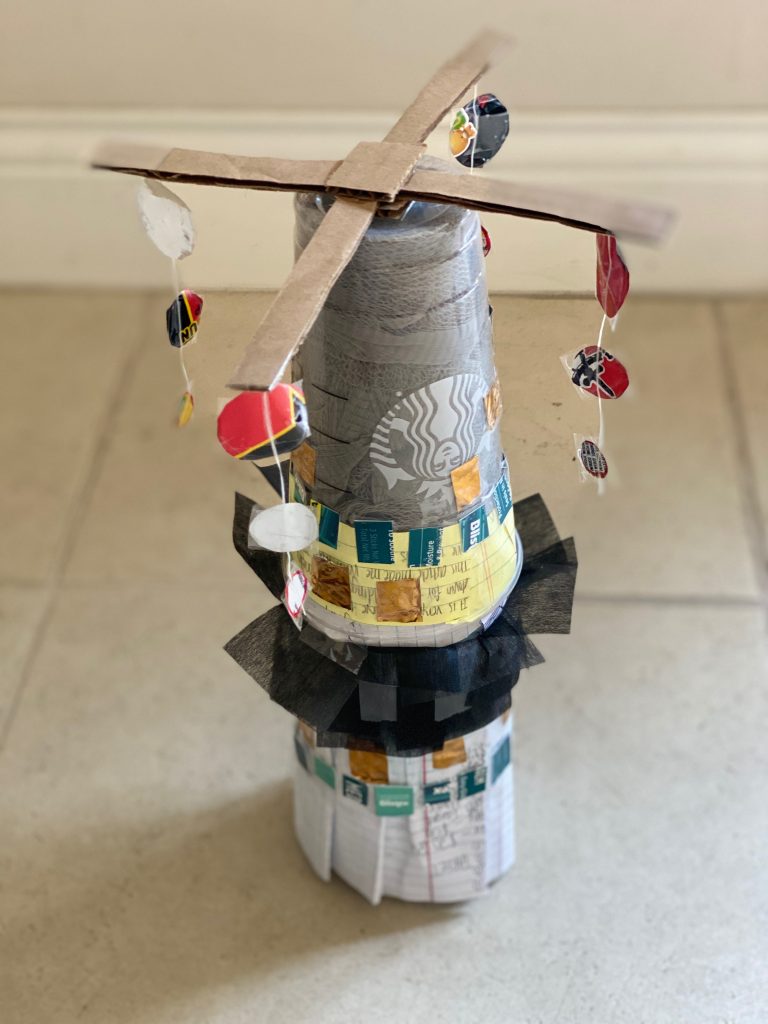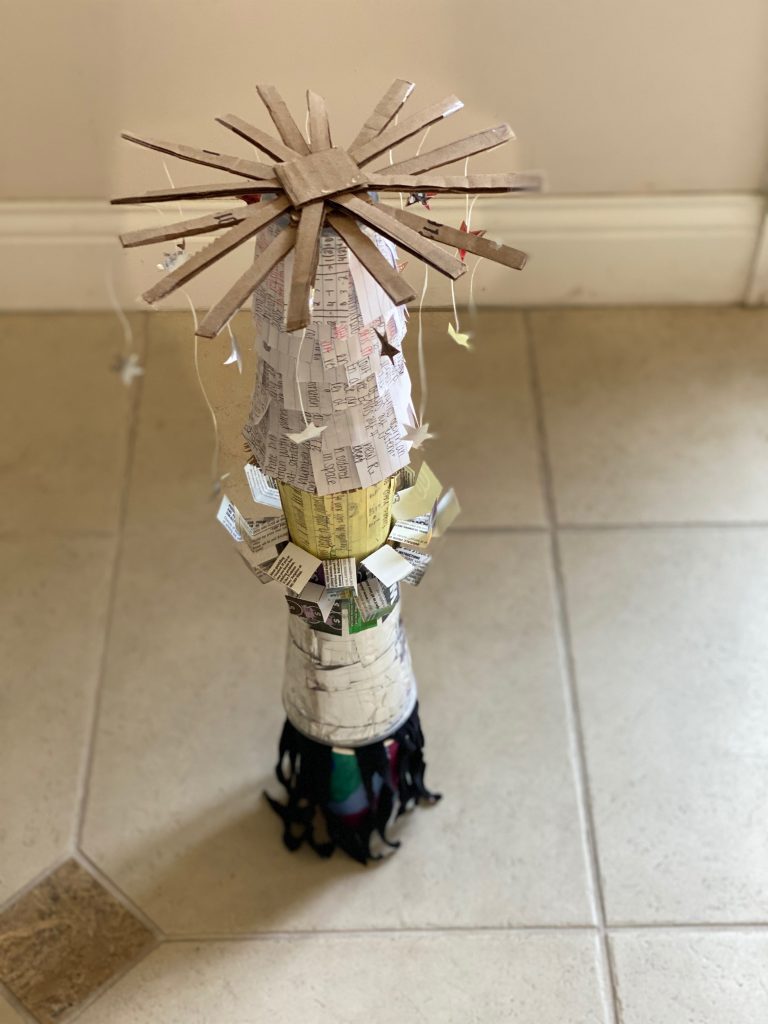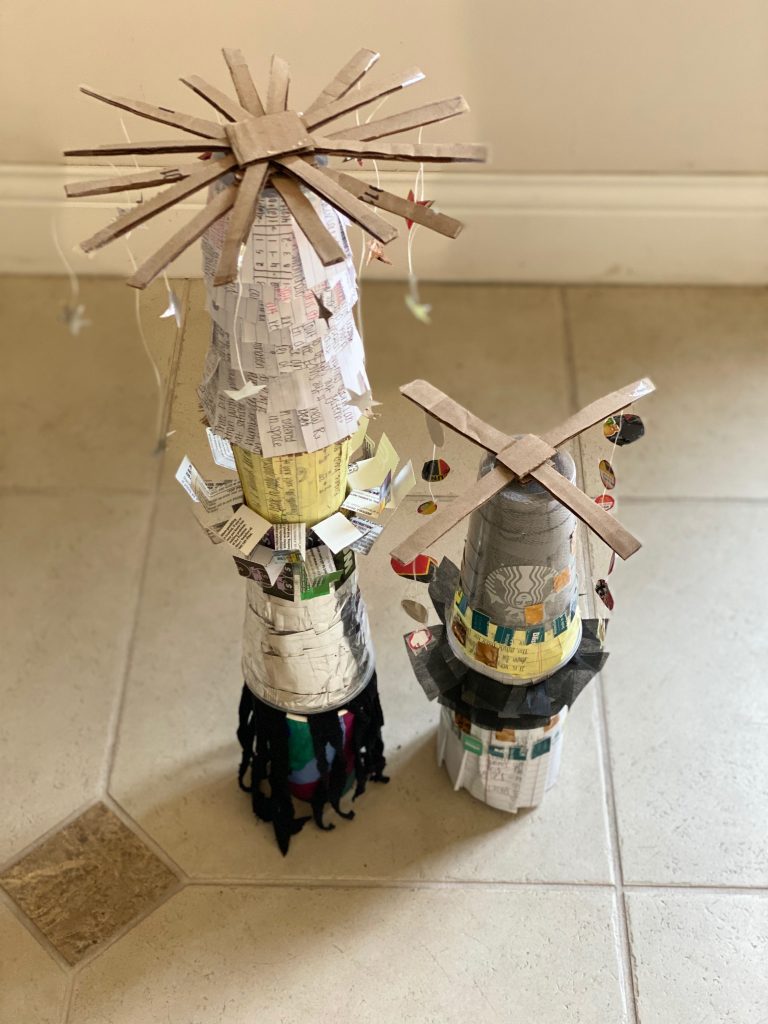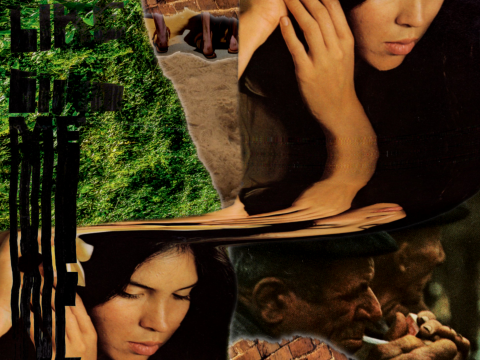The work that I have produced during this class is two structures, one reaching approximately twenty-five inches and the other measuring about thirteen inches tall. Beneath the outer layer of decorative trash, these structures are different sized cups, bottles, and soda cans stacked and glued together to form two separate towers. Used notebook paper, instant noodle packaging, cardboard, scratched off lottery tickets, an old scrubber, and a sock covers the exteriors of these structures. On top of the stacked cups rests a makeshift mobile formed from cardboard strips, dental floss, and the shiny interior of instant noodle wrappers.
The use of garbage in my work as a found material adds to the overall image of my structures. Without the aforementioned previously discarded materials, these structures would lose an important part of their story. In my opinion, Sarah Sze says it the best, “I often choose objects that have low value – easily replaceable, mass-produced and with little individual identity… but in their new context, they’re permitted to take on a different role, a hybrid identity where they recall their original identity but seem to perform a new one at the same time.” Sze is an artist who also makes sculptures out of trash. During this class, her work spoke to me. I loved how personal she was able to make her work feel by using discarded materials. Like Sze, by using my trash in my art, I have given it a touch of my personality that would be missing from a piece that uses supplies that I had no personal connection to. Between the old coffee cups, instant noodle packaging, and losing lottery tickets, I feel that this work lets viewers get to know me in subtle ways that could not happen if I lacked a connection with my materials. Knowing someone’s garbage allows you to see them in a new light, one that is not found when discovering that an artist prefers to use acrylic paint instead of oil paint.
In addition to this, using objects with history adds a more narrative story to my work–valueless objects turning into a new vital medium. This stems from a specific mindset, one of second chances. This specific mentality heavily influenced my thought process during the making of this art. Instead of solely focusing on the act of making art, I tried to focus on giving value to my materials. I repurposed garbage, trying to elevate what is considered to be “lowly” in our society– food packaging, lottery tickets, scrap paper– by making it into towers, an architectural feature often associated with wealth and royalty.
I hope that by drawing these connections between the tall ivory towers of royalty and the garbage that sits in the bottom of the trash cans and landfills all around the world, I can showcase how much of our perceptions of royalty, value, and wealth are only surface deep. If these towers had been covered with marble instead of notebook paper, would they seem more valuable? How much more environmental good could we accomplish if we valued recycled materials the same way we value ivory or gold? Much of making art from recycled materials is decided to treat objects that have been deemed worthless with the same respect that we give to “typical” artistic media. By recycling trash in this way, I hope I can rethink how I see garbage throughout my day to day life. Now, instead of throwing out cups and boxes without a second thought, I find myself asking “What could I do with this piece of trash to make into a piece of art?” and “Am I actually finished with this material? Or I am not looking past its manufactured purpose?”. Starting to question the role that our trash plays in our lives is a crucial first step to growing our art into a more self and environmentally conscious presence in the world at large, and I am grateful to have taken this opportunity to think more about the garbage in my life.
